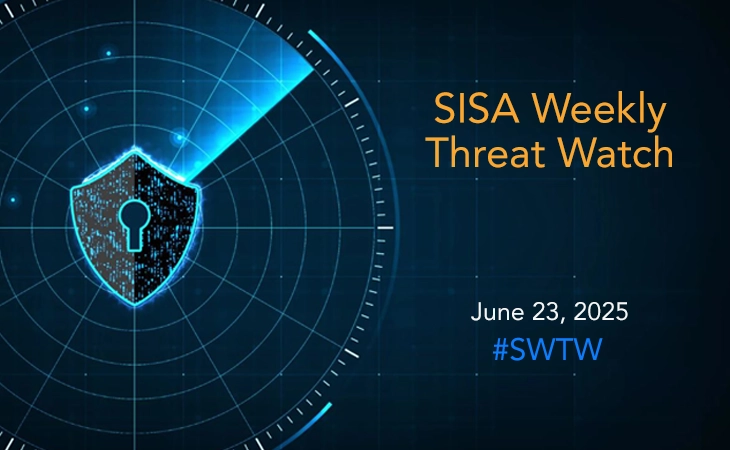

What is Cyber Threat Hunting? 10 Steps to Proactively Manage Cyber Threats
Unmask hidden threats in your system. Learn about cyber threat hunting, a proactive approach to cybersecurity that helps you discover attackers lurking in your network before they cause damage.
In the digital era, the shadow of cyber threats perpetually hangs over organizations, large and small. As these threats evolve in complexity and sophistication, traditional reactive security measures alone no longer suffice. This is where cyber threat hunting enters the stage – a proactive, investigative approach aimed at detecting and mitigating threats before they can cause harm. But what exactly does this entail, and how can organizations effectively embrace it? This comprehensive guide demystifies cyber threat hunting and presents a strategic 10-step approach to strengthen your cyber defenses proactively.
What is Cyber Threat Hunting?
Cyber threat hunting is the practice of proactively searching through networks and datasets to detect and isolate advanced threats that evade existing security solutions. Unlike automated security measures, threat hunting involves a combination of manual techniques and sophisticated analytics, driven by human intuition and in-depth knowledge of the adversary’s tactics, techniques, and procedures (TTPs). It is a disciplined approach that requires persistence, expertise, and the right tools to sift through normal activities and identify malicious behaviors.
The Importance of Cyber Threat Hunting
With cybercriminals constantly devising new methods to infiltrate networks, waiting for an alert means you are already behind. Cyber threat hunting positions organizations ahead of potential threats, enabling them to:
- Identify hidden, advanced threats that bypass traditional defenses.
- Reduce dwell time of attackers inside the network.
- Enhance the overall security posture by integrating threat intelligence and improving security measures.
- Build resilience against future attacks through lessons learned and continuous improvement.
A 10-step Guide to Proactively Manage Cyber Threats
1. Establish clear objectives
Before initiating any threat hunting activities, it is crucial to define clear objectives. These objectives should align with your organization’s overall security goals. Are you aiming to detect specific threat actors, uncover ongoing breaches, or enhance incident response capabilities? Clearly articulating these objectives provides focus and direction for the entire threat hunting initiative.
2. Gather and analyze intelligence
Intelligence forms the foundation of effective threat hunting. This involves collecting and analyzing data from various sources, including internal logs, endpoints, and external threat intelligence feeds. By understanding the current threat landscape and adversary tactics, you can better anticipate and respond to cyber threats.
3. Equip your team
Assemble a team of skilled professionals with expertise in cybersecurity, data analytics, and forensic analysis. These individuals should be equipped with the necessary tools and platforms to perform effective threat detection and investigation. Providing ongoing training and access to cutting-edge technologies ensures that your team remains at the forefront of cyber defense.
4. Define your hunting hypotheses
Develop hypotheses based on gathered intelligence, known threats, or emerging trends. These hypotheses serve as a roadmap for your hunting activities, guiding your team to focus on areas most likely to be targeted by adversaries. By formulating clear hypotheses, you can effectively prioritize and streamline your threat hunting efforts.
5. Utilize advanced analytics and tools
Leverage advanced analytics, machine learning, and automated tools to analyze vast amounts of data efficiently. These technologies enable you to detect anomalies and patterns indicative of malicious activity, allowing for proactive threat identification and mitigation.
6. Conduct active hunting
Armed with defined objectives, intelligence, hypotheses, and tools, initiate active threat hunting. Actively search for threats that align with your hypotheses and analyze any anomalies detected during the process. This proactive approach enables early detection and response to potential cyber threats.
7. Refine and repeat
Cyber threat hunting is an iterative process. Learn from each hunting exercise to refine your techniques, hypotheses, and tools. Continuous improvement is essential for staying ahead of evolving cyber threats and enhancing overall security effectiveness.
8. Document and share findings
Document your threat hunting methodologies, findings, and lessons learned. Sharing this information within your organization and with the broader cybersecurity community promotes knowledge exchange and collective defense. It also facilitates collaboration and enhances the overall resilience against cyber threats.
9. Integrate findings into security operations
Use insights gained from threat hunting to enhance your organization’s security posture. Update defense mechanisms, refine alerting systems, and improve incident response strategies based on the findings of your threat hunting activities. Integrating these findings into security operations strengthens overall cyber resilience and mitigates future risks.
10. Foster a culture of security awareness
Cultivate a security-aware culture within your organization by educating employees on the importance of cybersecurity. Encourage a proactive approach to security and empower individuals to contribute to a secure digital environment. By fostering a culture of security awareness, you strengthen the human element of your organization’s defense against cyber threats.
Conclusion
Cyber threat hunting is not just a task—it is a strategic approach to cybersecurity. By adopting a proactive stance, organizations can not only detect and neutralize threats more effectively but also significantly enhance their overall security posture. The journey to becoming proficient in threat hunting is ongoing, driven by curiosity, expertise, and a commitment to security excellence. Remember, in the realm of cybersecurity, the best defense is a proactive offense.
FAQs
How often should threat hunting be conducted?
Threat hunting should be an ongoing process. The frequency can vary based on your organization’s size, industry, and risk profile, but regular sessions are recommended to keep pace with the evolving threat landscape.
Can small organizations implement cyber threat hunting?
Yes, organizations of all sizes can benefit from cyber threat hunting. While smaller teams may face resource constraints, focusing on critical assets and leveraging external intelligence can make the process manageable and beneficial.
What are the key skills required for a cyber threat hunter?
Cyber threat hunters typically need strong analytical skills, in-depth knowledge of network and system architecture, proficiency in forensic analysis, and an understanding of current cyber threat tactics and techniques.
Latest
Blogs
Whitepapers
Threat-a-Licious
Customer Success Stories

SISA is a Leader in Cybersecurity Solutions for the Digital Payment Industry. As a Global Payment Forensic Investigator of the PCI Security Standards Council, we leverage forensics insights into preventive, detective, and corrective security solutions, protecting 1,000+ organizations across 40+ countries from evolving cyberthreats.
Our suite of solutions from AI-driven compliance, advanced security testing, agentic detection/ response and learner focused-training has been honored with prestigious awards, including from Financial Express, DSCI-NASSCOM and The Economic Times.
With commitment to innovation, and pioneering advancements in Quantum Security, Hardware Security, and Cybersecurity for AI, SISA is shaping the future of cybersecurity through cutting-edge forensics research.
Company
Resources
Quick Links
Copyright © 2025 SISA. All Rights Reserved.
 USA
USA India
India APAC
APAC Middle East
Middle East Global
Global





 Facebook
Facebook Linkedin
Linkedin  X
X Youtube
Youtube





